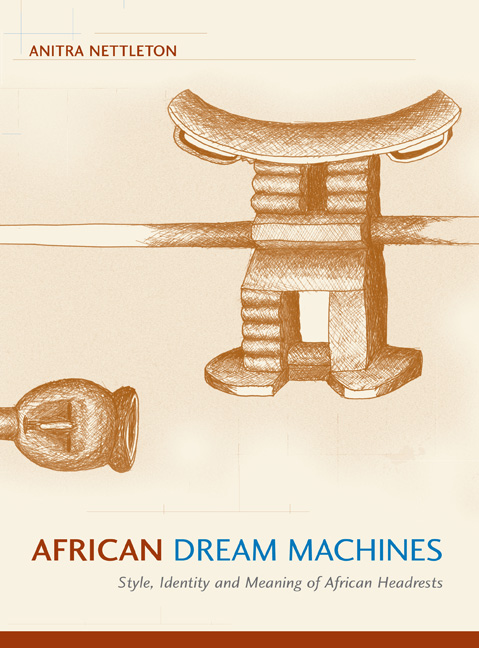Book contents
- Frontmatter
- Contents
- Preface
- Acknowledgements
- Notes on the Use of African Ethnic Names and Country and Place Names
- References to Illustrations in the Text and Notes on Illustrations
- Chapter 1 Headrests and Art
- Chapter 2 A Matter of Style, or, Why Style Matters
- Chapter 3 Methodology, Position and Limitations
- Chapter 4 The Geographical and Chronological Distribution of the Columned Headrest
- Chapter 5 Authenticity and History
- Chapter 6 East African Headrests: Identity, Form and Aesthetics
- Chapter 7 Tracing Histories: Central and Southern African Connections
- Chapter 8 Not Just a Curious Beauty: The Anatomy of Meaning in Useful Objects
- Notes to Chapters
- Bibliography
- List of Illustrations
- Index
Chapter 2 - A Matter of Style, or, Why Style Matters
Published online by Cambridge University Press: 18 May 2019
- Frontmatter
- Contents
- Preface
- Acknowledgements
- Notes on the Use of African Ethnic Names and Country and Place Names
- References to Illustrations in the Text and Notes on Illustrations
- Chapter 1 Headrests and Art
- Chapter 2 A Matter of Style, or, Why Style Matters
- Chapter 3 Methodology, Position and Limitations
- Chapter 4 The Geographical and Chronological Distribution of the Columned Headrest
- Chapter 5 Authenticity and History
- Chapter 6 East African Headrests: Identity, Form and Aesthetics
- Chapter 7 Tracing Histories: Central and Southern African Connections
- Chapter 8 Not Just a Curious Beauty: The Anatomy of Meaning in Useful Objects
- Notes to Chapters
- Bibliography
- List of Illustrations
- Index
Summary
BUT STYLE IS, above all, a system of forms, with a quality and a meaningful expression through which the personality of the artist and the broad outlook of a group are visible. It is also the vehicle of expression within a group, communicating and fixing certain values of religious, social and moral life through the emotional suggestiveness of forms. It is, besides, a common ground against which innovations and the individuality of particular works may be measured (Schapiro 1957:287).
INTRODUCTION: SOME OF THE ISSUES
Headrests have been made from wood in many parts of the world, from Ancient Egypt to Africa, Southeast Asia, China, Japan, Melanesia and Polynesia. There is a remarkable degree of formal similarity among these headrests, all of which fall within a fairly narrow band of possible structural arrangements. In the catalogue entitled Support des Réves, which accompanied an exhibition at the Dapper Museum in Paris, Falgayrettes (1989) arranged the illustrations according to the formal resemblances visible among headrests from provenances geographically, spatially and chronologically far distant from one another, thus creating a series of comparative tableaux of this ‘affinity’ of form. The existence of visibly recognisable similarities in formal elements among so many different examples of this single object type from such widely separated social and historical origins can only be explained in terms of the limitations imposed by the function of these objects in relation to human anatomy and the contexts of their original use. Height, size and stability would have been primary constraints, as would relative comfort and durability. The height of the headrest would be constrained by the length of the human neck and the degree of the angle to which it could be elevated comfortably above the shoulders of the sleeping person. The headrest would have to be relatively stable to support the head in the relaxation of sleep, and the curvature, width, and length of the platform or upper surface, although more variable, would be important in providing comfort. The general everyday/-night use of the headrests would suggest that they should be durable, and in many instances, portable. As most of these headrests are made from wood, there would also have been many similarities in the technological possibilities and constraints present in the processes of their conceptualisation and execution.
- Type
- Chapter
- Information
- African Dream MachinesStyle, Identity and Meaning of African Headrests, pp. 23 - 58Publisher: Wits University PressPrint publication year: 2007



